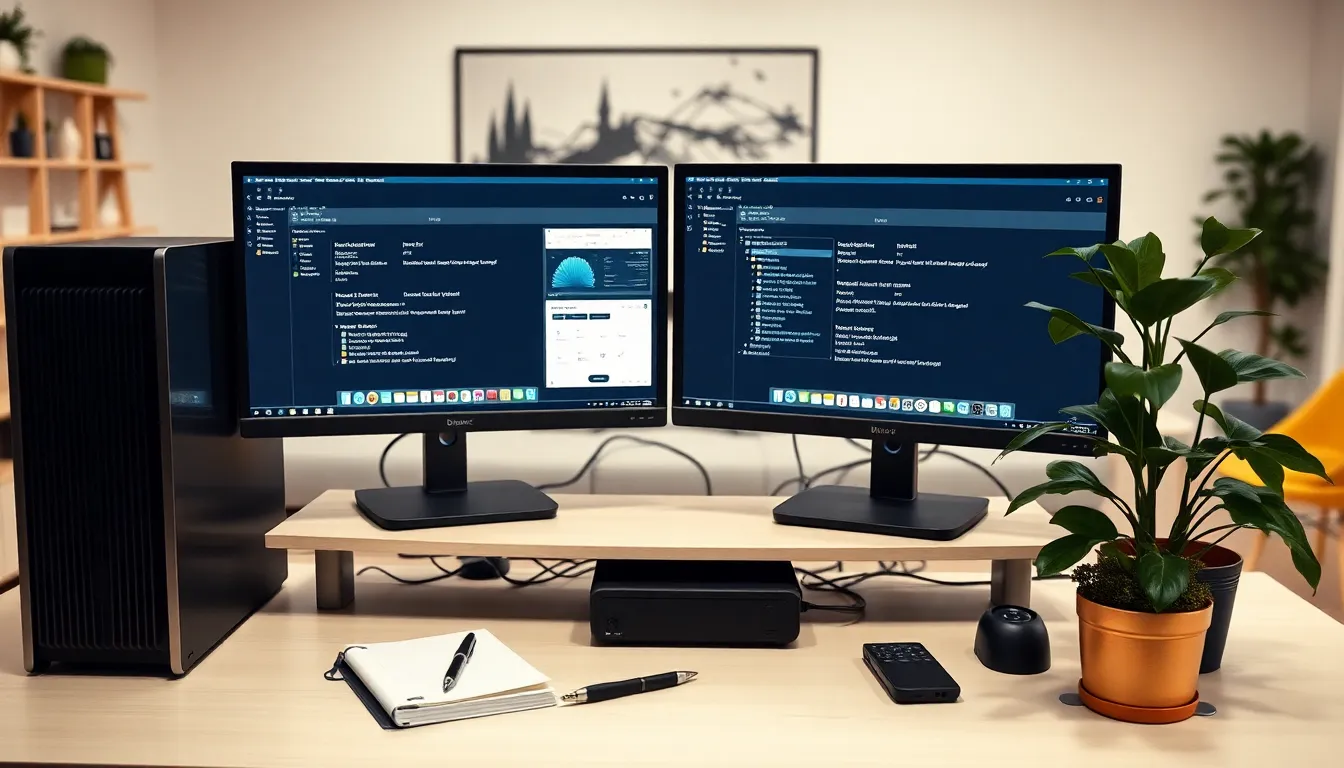Updating software might not sound like the most thrilling task, but when it comes to Endbugflow, it’s like giving your PC a much-needed spa day. Imagine your computer lounging in a fluffy robe, sipping on a digital smoothie, and feeling refreshed with all the latest features and fixes. Keeping Endbugflow up to date ensures smooth sailing for your projects, so why not treat your tech to a little TLC?
Table of Contents
ToggleUnderstanding Endbugflow Software
Endbugflow software serves as a powerful tool for project management, streamlining workflows and improving team collaboration. This software integrates various features that enhance usability and increase productivity. Users benefit from its intuitive interface, which simplifies task tracking and progress monitoring.
The software includes functionalities such as real-time updates, notifications, and detailed analytics. These features provide users with critical insights, helping them make informed decisions quickly. Overall, effective project management hinges on utilizing such tools, leading to improved outcomes.
Regular software updates play a crucial role in maintaining functionality and security. Developers continuously release updates that fix bugs and introduce new features. Staying current allows users to leverage the latest enhancements for maximum effectiveness.
Compatibility with other tools further enhances Endbugflow’s value. Users can integrate it with other software, creating a cohesive environment that fosters collaboration across platforms. This adaptability attracts a diverse range of teams and industries.
Endbugflow transforms project management, ensuring seamless operations and better efficiency. By using this software, teams can achieve significant improvements in communication and workflow. Prioritizing updates becomes essential, allowing users to fully utilize the software’s capabilities.
Preparing for the Update

Before initiating the update process for Endbugflow software, several steps require attention. Ensure the system aligns with the software’s latest requirements to facilitate a smooth update experience.
System Requirements
Verifying system requirements prevents technical issues during installation. Check the official Endbugflow website for the latest specifications. Systems need a minimum of 8 GB RAM for optimal performance. A multi-core processor significantly enhances responsiveness. Ensure that the operating system is compatible, with Windows 10 or higher recommended. Graphics drivers should also be updated. Meeting these requirements ensures that all software features function effectively.
Backup Important Data
Backing up important data safeguards against potential data loss. Create a comprehensive backup of all project files and user settings before proceeding with the update. Utilize cloud storage solutions or external hard drives for the backup process. Regular backups minimize risks associated with software updates. Following best practices in data management can save time and ensure project continuity. Checking backup integrity after creation provides additional security. Always prioritize backups to protect valuable information.
Steps to Update Endbugflow Software on PC
Updating Endbugflow software is a straightforward process. It involves downloading the latest version, installing the update, and verifying successful installation.
Downloading the Latest Version
Visit the official Endbugflow website to find the latest version of the software. Locate the download section that lists available updates. Click on the appropriate link for your operating system, ensuring compatibility with Windows 10 or higher. After clicking the link, the download should start automatically. Monitor the progress, and once the download completes, the file will appear in the designated downloads folder.
Installing the Update
Open the downloaded file by double-clicking it. Follow the on-screen prompts to initiate the installation process. Users must accept the terms and conditions to proceed with the update. Configure any necessary preferences during installation, such as choosing the installation directory. After making selections, click the install button. Installation typically takes a few minutes, depending on system speed and file size.
Verifying the Installation
After installation, launch Endbugflow to confirm the update was successful. Users can check the version number by navigating to the settings or about section within the software. Comparing the version number with the latest version on the Endbugflow website ensures accuracy. If the version matches, the update is complete. Should any issues arise, revisiting the installation steps or checking for additional updates may resolve them.
Troubleshooting Common Issues
Users may encounter several issues when updating Endbugflow software on a PC. Many of these problems can stem from compatibility issues or incorrect installation procedures.
One common issue involves system requirements. If a user’s PC does not meet the minimum specifications, such as 8 GB RAM or an incompatible operating system, the update may fail. Checking these requirements helps identify potential problems early.
Another frequent challenge occurs during the installation process. Users might see error messages or have the installer freeze. Restarting the PC can clear temporary glitches, allowing the update to proceed smoothly.
Sometimes, users experience slow performance post-update. This situation may arise from residual files from the previous version. Cleaning up unnecessary files can help optimize performance.
Network connectivity also plays a crucial role. If the internet connection is unstable or too slow, downloading the update may take longer than expected or fail entirely. Ensuring a stable and fast connection can alleviate these concerns.
Additionally, some users report issues with version verification after installation. If the new version doesn’t display correctly, reinstalling the software often resolves this problem. Following the initial prompts and instructions is essential for a successful installation.
Lastly, running the update without administrative privileges can prevent successful installation. Granting those privileges, if necessary, ensures full access to the required system files for the update.
By addressing these common issues, users can enhance their experience with Endbugflow and ensure effective project management.
Updating Endbugflow software is essential for maximizing its potential and ensuring optimal performance. By keeping the software current users can take advantage of new features and improvements that enhance productivity and collaboration.
Prioritizing updates not only safeguards against bugs but also maintains system security. Following the outlined steps and best practices allows for a smooth update experience while troubleshooting common issues can further enhance usability.
Incorporating regular updates into a team’s routine can lead to more efficient project management and better overall outcomes. Embracing these updates is a proactive approach to maintaining a competitive edge in today’s fast-paced work environment.





